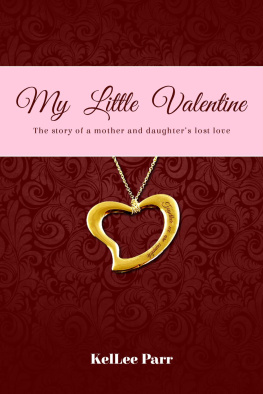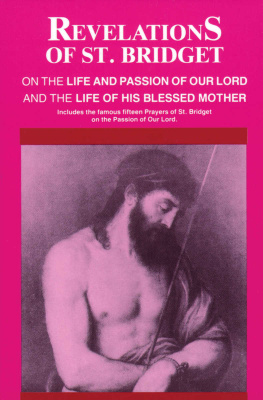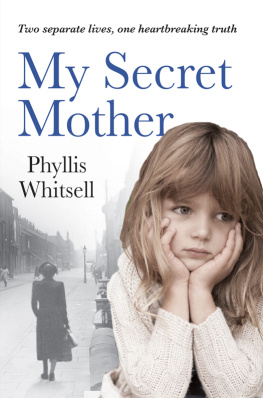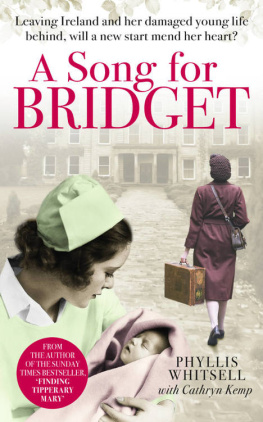My Name is
Bridget
THE UNTOLD STORY OF BRIDGET DOLAN
AND THE TUAM MOTHER AND BABY HOME
Alison OReilly
Gill Books
This book is dedicated to the memory of the Tuam Babies and their mothers, and to all children who died while in the care of the Irish state and religious orders.
I would also like to dedicate this book to my late grandmother, Mai Giggins. My nanny was an inspirational and multi-talented woman who worked exceptionally hard all her life while raising her 13 children alone. She went on to be a proud grandmother, great-grandmother and great-great-grandmother to more than 80 children. As a young teenager, Nanny helped rescue two girls from a Magdalene Laundry with my great-grandmother Margaret Doyle. No matter what came her way, my nanny never stopped getting up and getting on with it. I will always miss you, Nan. Wherever I am, youll always be.
Contents
Introduction: The Moment of Truth
Significant quantities of human remains have been discovered.
W hen those eight words were spoken by Minister Katherine Zappone on 3 March 2017, they still had the power to shock, even for those who already knew they were inevitable. The minister was announcing the findings of the initial excavations at the Mother and Baby Home in Tuam, County Galway, which had been ordered by the Commission of Investigation into Mother and Baby Homes. The following day, those eight hard-hitting words would appear in the headlines of hundreds of newspapers and websites in every corner of the globe. It was a very chilling and a very public indictment of both the Church and the Irish state and, if truth be told, of the Irish people.
The stark facts presented by the team that had conducted the geophysical survey effectively confirming that the bodies of hundreds of dead children had been buried in a mass, unmarked grave struck a fresh and horrified chord with people who had become apathetic and desensitised to the crimes of the past associated with the Catholic Church. Even in a world where hundreds of thousands of children are killed every day in various brutal and casual ways, the idea of the remains of innocent children being disposed of in a septic tank was deeply disturbing. The idea that both the Church and the Irish government could have treated children as less than fully human because of a so-called accident of birth, especially in the aftermath of the horrors of the Second World War, was an extremely difficult fact to accept. But there was no denying it now. What had once been whispered as rumour and gossip was now a proven fact, and Irish people were going to have to come to terms with it.
In the course of her speech describing the findings, Minister Zappone didnt give a body count, but the world was told that the bodies of the children, who were aged between 35 foetal weeks and two to three years old, had been identified as residents of St Marys Mother and Baby Home in Tuam, all dating to its years of operation, between 1925 and 1961. Through no fault of their own, these innocent children were condemned from birth by Church, state and society, and when their tiny bodies gave up, they were put down in the ground with no dignity and their unmarked, unconsecrated burial place was covered up, never to be mentioned again.
The archaeological team who excavated the site found childrens remains in 17 of the 20 chambers of a disused septic tank buried underground in the middle of what is now a housing estate on the Dublin Road in Tuam. The remains were exhumed and taken away for analysis in a laboratory, where experts used dating techniques to determine their exact age. Those findings demolished a theory that had been put forward by Catholic commentators, who had insisted that any bones discovered on the site would date to the Famine era, more than 150 years ago. That wasnt the case.
It fell to Minister Katherine Zappone to tell the world the truth about the Tuam Mother and Baby Home. The press conference was not pre-planned. It was called at the very last minute and reporters rushed to Government Buildings in Dublin to find out what this was all about. This particular press conference had that rare quality in modern politics the unexpected. In an era where everything seems to get leaked in advance, the excavations findings had remained a well-kept secret. There had been some odd claims on social media, but no one had confirmed anything.
As the minister stood in front of the microphone in a packed press room, her face said it all she knew she was delivering news that would reverberate around the world and change many lives forever.
There was a long history leading to this moment. Ninety-two years earlier, the Tuam Mother and Baby Home had opened its doors to young women abandoned by their families and their communities. Five years earlier, an amateur historian called Catherine Corless had begun asking questions about the babies who had not survived the Home where were they? Three years earlier the Irish Mail on Sunday had broken a story no one had wanted to believe that the babies were buried in a septic tank, dumped and forgotten. Two years earlier the Irish government had established the Commission of Investigation, directing it to examine the records and practices of 14 Mother and Baby Homes and four county homes. The Commission was the response to the expos carried on the front page of the Irish Mail on Sunday, which was headlined: A Mass Grave of 800 Babies. And over all those long years, women and their surviving children had spoken and accused and asked and demanded to know what had happened and, crucially, why it had happened. Catherine Corless had been their tireless advocate, saying over and over again:
The children are there, I know they are there. We just have to find them, find which area they are in because I believe, and my research shows me, that the children are buried all over the site, not just in the grave we know. They are there absolutely.
This moment of truth had been a long time coming.
It was time for Minister Zappone to speak. Indeed, her willingness to speak out so quickly was striking. Another TD might have held off for a while, might have postponed opening the floodgates. Minister Zappone was herself an outsider in many ways, but she had won the trust of some of the groups representing the survivors of Mother and Baby Homes. Along with adoption groups, they had been campaigning for years, writing to successive Ministers for Children about the tragic circumstances surrounding how they came to be separated from their mothers. She had won their trust by proving to have an appetite for confronting the past unflinchingly, without keeping an eye on the potential for future costs for the government and she wasnt going to let them down now. Earlier that morning she had telephoned Catherine Corless, who had uncovered the names of the children, to say this news simply could not wait.
Significant quantities of human remains have been discovered
There was a shocked silence in the room. Journalists, photographers and cameramen exchanged glances, knowing they were the first people to hear a story that was going to sweep over the country like a tsunami. The minister continued to read her notes and press release calmly, but with an air of sorrow in her voice:
This is very sad and disturbing news. It was not unexpected as there were claims about human remains on the site over the last number of years.
Up to now we had rumours. Now we have confirmation that the remains are there, and that they date back to the time of the Mother and Baby Home, which operated in Tuam from 1925 to 1961.
Her words were backed up by a statement released by the Commission of Investigation itself. The Commission had received its Terms of Reference in February 2015, described by then Minister for Children James Reilly as an independent commission, which has a three-year deadline and which will cost approximately 21 million, following the signing by then Taoiseach Enda Kenny. Since then, an interdepartmental scoping exercise had been carried out, along with an invitation to survivors of the homes to give their testimony to the Commission. A second interim report had been published on 11 April 2017, but todays announcement was very different. The Commission stated:













